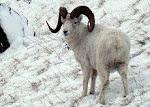 "I Have Been Discovered"
"I Have Been Discovered"
 "Ears Back, Sounding The Alarm, Swishing The Tail ~ Warning Signs"
"Ears Back, Sounding The Alarm, Swishing The Tail ~ Warning Signs"
 "Pawing The Ground ~ Turning The Herd"
"Pawing The Ground ~ Turning The Herd"


The Photo Journeys of Stan Harrington.







 "I Have Been Discovered"
"I Have Been Discovered"
 "Ears Back, Sounding The Alarm, Swishing The Tail ~ Warning Signs"
"Ears Back, Sounding The Alarm, Swishing The Tail ~ Warning Signs"
 "Pawing The Ground ~ Turning The Herd"
"Pawing The Ground ~ Turning The Herd"


Photographs And Video Productions Contained On Photo Treks Are Considered The Copyrighted Property of Stanley R. Harrington And May Not Be Copied, Duplicated, Or Utilized In Any Manner Without The Expressed Written Consent Of Stanley R. Harrington.








During The Calendar Year Of 2010, An Item On My “Bucket List” Is To “Shoot” The Majority Of The Big Game Animals Of
* Previously Shot
** 2010 Shot
BIG GAME ANIMALS
Moose, Bull **
Caribou, Bull **
Elk, Bull **
Whitetail, Buck **
Mule Deer, Buck **
Blacktail, Buck**
Antelope, Buck **
Dall Sheep, Ram **
Stone Sheep, Ram **
Rocky Mtn. Big Horn **
Desert Big Horn**
Black Bear**
Brown Bear**
Grizzly Bear **
MISCELLANEOUS
Wild Horse**
Wild Burro **
BIRDS
Bald Eagle **
Golden Eagle
Canadian Goose **
Snow Goose **
Swan **
Ducks, Variety **
Wild Turkey **
Pheasant**
Grouse **
1 comment:
Many a rancher has turned his stud horse loose to work some genetic magic for his own purpose, capture the foals genetically engineered for ranch work...
Post a Comment